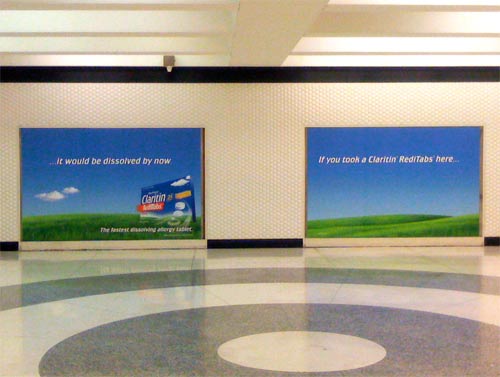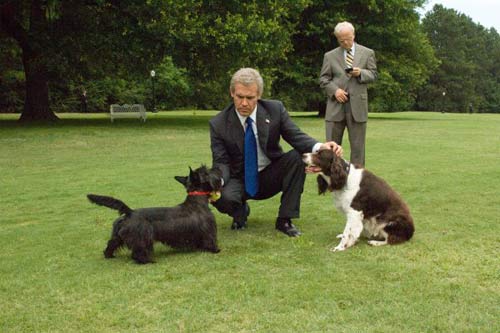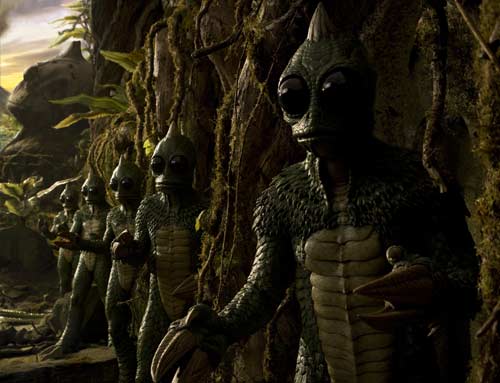Remember that old dude in Jurassic Park who unleashed a bunch of prehistoric beasts by reanimating them from a drop of blood that was caught in the proboscis of a mosquito who'd met her doom in a blob of DNA-preserving amber? Remember when those beasts got loose and tore up the joint, and the old dude likened it to a flea circus he'd built in his youth? And remember when Laura Dern told him that this seemingly intractable problem -- which he created -- was something he couldn't think his way out of, that he'd have to feel his through it, which is maybe the dumbest advice ever given to a mad entrepreneur in the movies? Well, he ate it up. Said, yes, he'd feel his way through it so that next time it wouldn't go so disastrously haywire.
Well, a year before that incident in the jungle, the same ass -- Richard Attenborough -- made a movie about Charlie Chaplin, and he didn't understand Chaplin any better than he did velociraptors. He feigned interest in Chaplin's art and acted like he was going to feel his way through the biography, but even though his heart swelled in the vicinity of the master, he somehow churned out a tabloid biopic of the worst kind. Little did anyone know that Pola Negri or some such starlet was so pivotal in this history. She gets some naked screen time in Chaplin, but Monsieur Verdoux and Limelight and A King in New York -- Chaplin's later films, the first an oddly chilling subversion of his most famous character -- don't exist. Attenborough barely examines the films that he does acknowledge, except to give them a cursory glance and place them into a timeline that seems to mock the entire medium. You'll find no greater fan of Chaplin than me, but it's silly to think that cinema was all about thrown pies until Chaplin alone turned it into an art form. Attenborough's 50 years in the business surely taught him that much, but the token idolatry of his film says otherwise. As far as the plot is concerned, the work is a mere psychological motivator that serves, above all, to bring the artist fame and fortune. I suspect the real Chaplin, who shot 300 hours of footage for an 82-minute film called The Gold Rush, would disagree with that assessment of his priorities.
Attenborough probably could have reanimated Chaplin from blood, mosquito, and amber, but instead he did the next best thing: he hired Robert Downey Jr. for the lead role, and this actor clearly put something more than just heart into the job, something more like elbow grease and I assume significant practice. I'm not sure how exactly he tapped into the contradictions of Chaplin's personality nor how he mimicked the physical performances with such staggering precision, but I remember thinking in 1992 that the movie, bad as it is, might be a net positive if it replaces in the public's mind the gussied up tramp of those IBM commercials with Downey Jr instead. I also get a kick out of seeing the great Geraldine Chaplin play her own grandmother in a small role, but it's Downey Jr. who makes the film more than a regrettable footnote; thanks to his out-of-band contribution, it's a regrettable footnote with an asterisk that reads "outstanding performance."
To date, Attenborough's film is the only feature-length biopic on Chaplin, and while there are several documentaries -- some of them only a tad better than this fictional feature -- the best by far is diametrically opposed to gossip. Unknown Chaplin, a three-part BBC documentary by Kevin Brownlow and David Gill, goes into the weeds and tries to divine Chaplin's methods from the footage he cut away. Brownlow and Gill show a nine-minute sequence cut from City Lights in its entirety, without talking over it, the antithesis of the highlight reel that ends Attenborough's film. Theirs is the studied gaze of knowledgeable and still-curious cinephiles who pore over shots like excited archeologists, and their unpacking of Chaplin's early short film The Immigrant is both scholarly and suspenseful, proving that the subject withstands scrutiny and holds an audience even with no mention of starlets and scandals.











